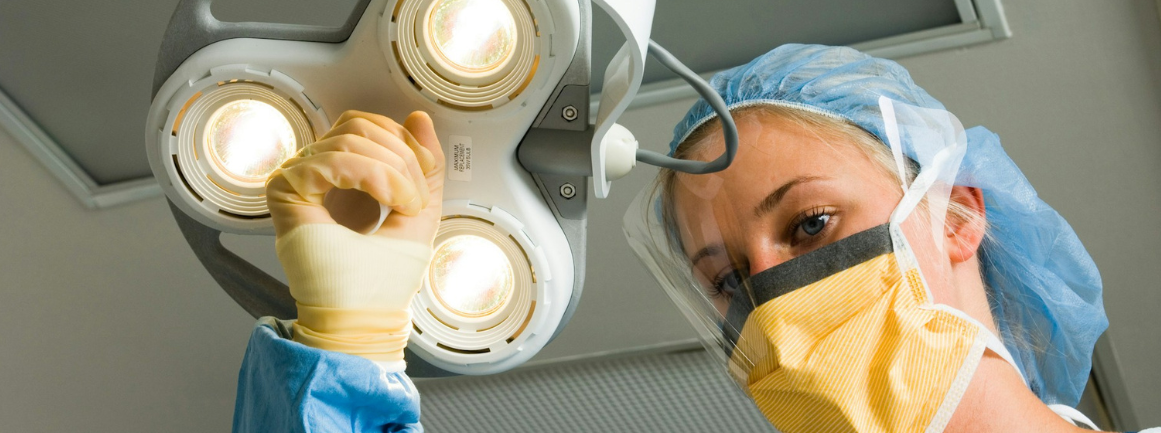The sustained growth of Chinese outbound medical tourism is underpinned by two macroeconomic trends: rising disposable incomes and increasing healthcare prioritization. According to the National Bureau of Statistics of China (NBSC), per capita disposable income has grown steadily since 2022, amplifying household purchasing power. Concurrently, healthcare expenditure as a percentage of total consumption has risen sharply, as noted in the Statistical Communiqué of the People’s Republic of China (2020–2025). This dual trend reflects a structural shift toward health-conscious spending, creating fertile ground for cross-border medical travel.
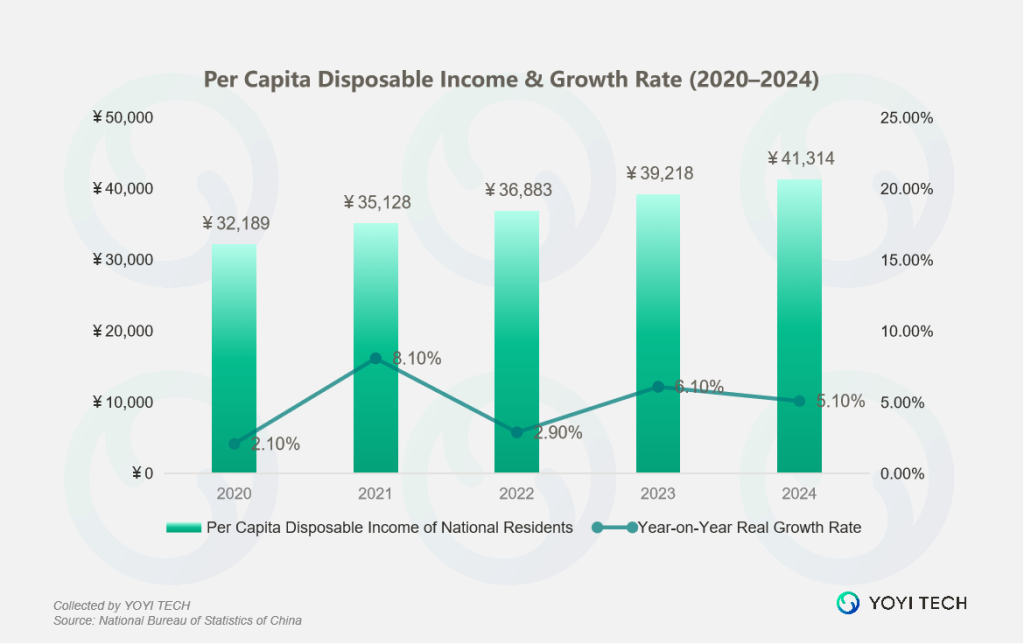
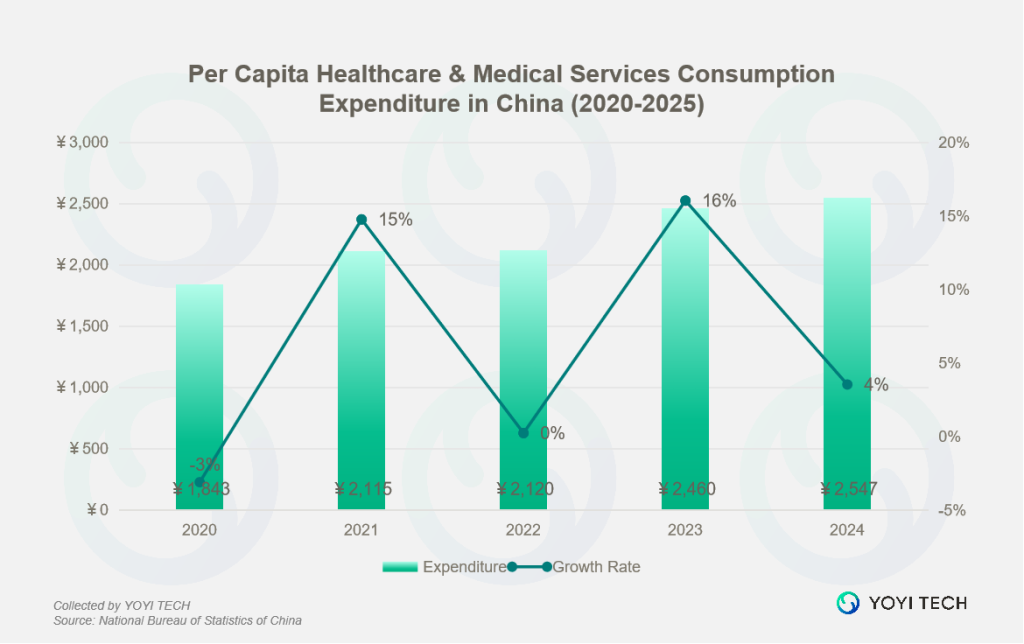
01 Treatment Purpose Segmentation
According to L.E.K. analysis, Chinese outbound medical tourists fall into three primary categories:
Critical Care Patients (40% of travelers, data from Analysys): Predominantly seeking advanced treatments for cancer, organ transplants, and neurological conditions in the U.S., Germany, Japan, and Singapore due to superior technology and expertise.
Preventive Care Seekers (28%, data from Analysys): Focused on health screenings and genetic testing, often opting for Japan, South Korea, or Singapore for proximity and cost efficiency. This segment offers high customer lifetime value (CLV) due to recurring engagement.
Aesthetic Medicine Consumers: Primarily traveling to South Korea for cosmetic procedures, driven by cultural alignment with East Asian beauty standards.
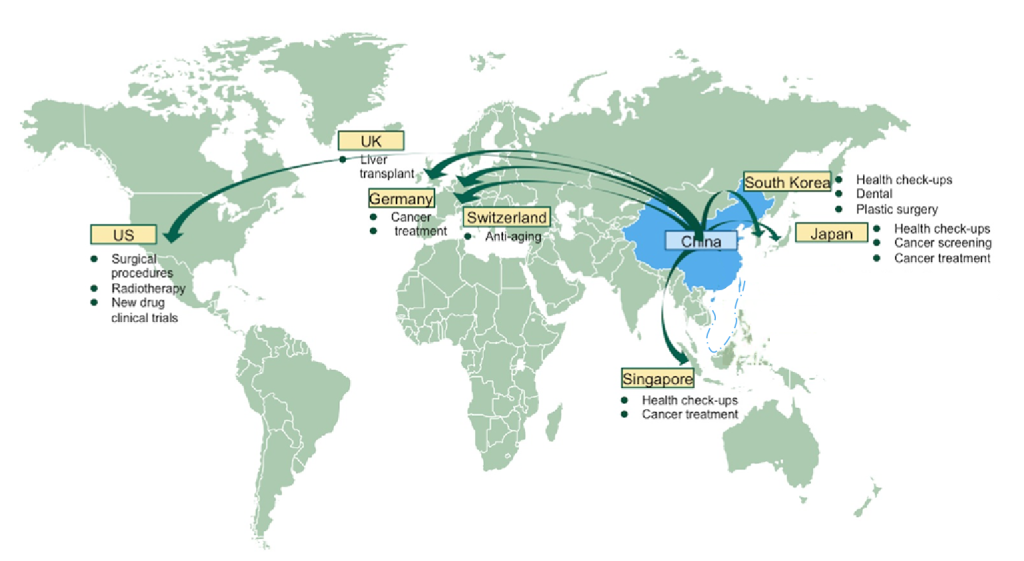
02 Outbound Medical Service Type Allocation
The Special Analysis of the Overseas Healthcare Market 2017 by Analysys reveals a clear hierarchy in Chinese outbound medical service demand. Critical care dominates, constituting 40.2% of all Chinese outbound medical travelers, driven by high-complexity treatments such as cancer therapies, organ transplants, and advanced neurological interventions.
Health check-ups represent the second-largest segment at 28%, reflecting growing consumer emphasis on preventive care and early disease detection. Unlike critical care, which is characterized by low frequency and high costs, health check-ups offer recurring engagement opportunities, positioning them as a high-potential driver of customer lifetime value (CLV).
Residual ancillary services (14.6%) encompass post-treatment rehabilitation, chronic disease management, and non-urgent specialized care. Cosmetic surgery accounts for 12.2%, underscoring the sustained demand for aesthetic enhancements, while the remaining 4.9% includes niche categories such as experimental therapies and rare disease treatments.
This allocation highlights two strategic priorities. Critical care remains the cornerstone of outbound medical travel, demanding partnerships with globally accredited institutions. Health check-ups and ancillary services present untapped potential for recurring revenue streams through bundled offerings and loyalty programs.
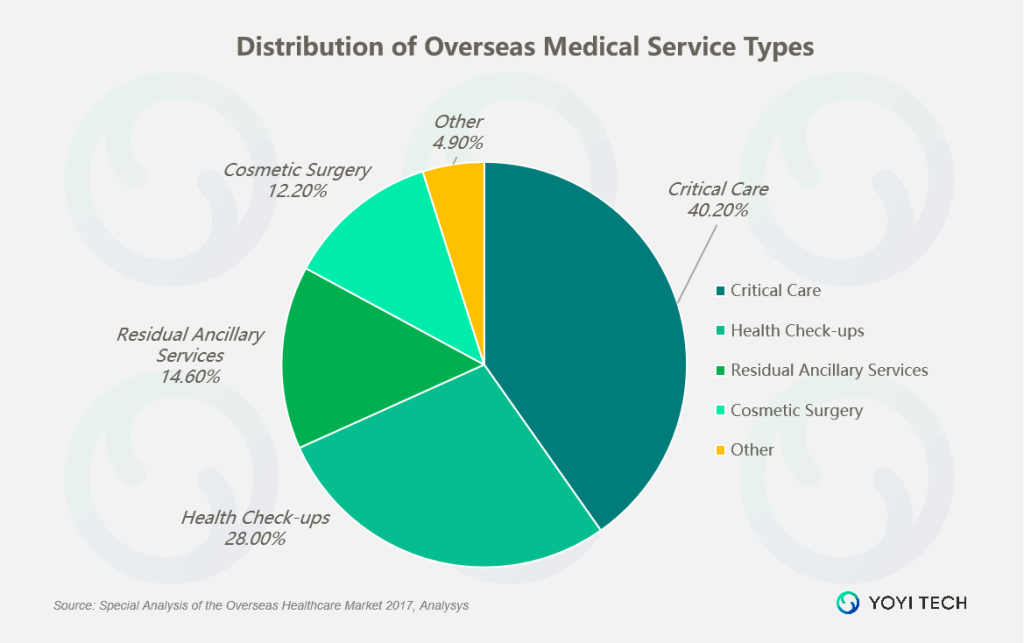
03 Destination Preferences
The U.S. dominates the critical care market (70% share), leveraging its reputation for innovative therapies and FDA-approved drugs. Japan ranks second (19.2%), appealing to cost-conscious patients through predictable pricing and geographic proximity. The U.K. (8.7%) attracts patients seeking high-quality care at lower costs than the U.S.
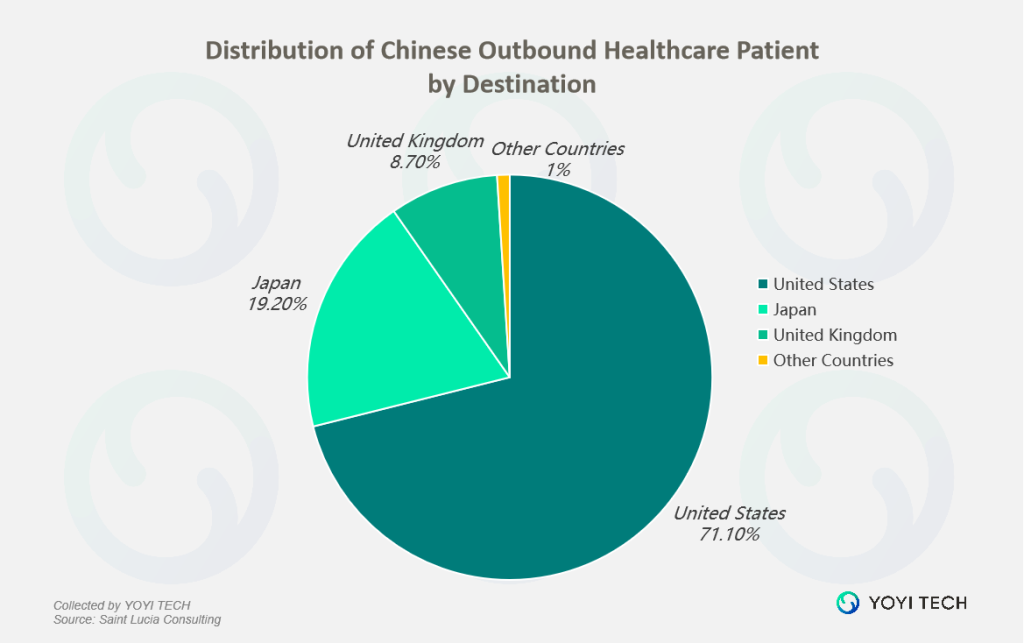
04 YOYI DMP’s Target Persona: Health Pioneers & Beauty Pursuers
Marketing for critical care treatments, such as cancer treatment, is strictly prohibited by the Chinese government. However, advertising for preventative treatments and cosmetic surgeries remains both permissible and highly popular.
The 96.7 million-strong health & beauty segment covered by YOYI DMP skews male (54%) and young (74% aged 25–34), with 81.5% being car owners—a strong indicator of high disposable income. Key engagement channels include auto-centric touchpoints (4S stores, car service apps, and DOOH in parking lots) and premium lifestyle platforms.
Married consumers (60%) require cross-device targeting strategies, such as OTT-to-mobile or DOOH-to-mobile campaigns. Singles (40%) respond well to empowerment-driven messaging, like “Better Me”.
Strategic targeting across online and offline channels is essential to effectively reach and convert this lucrative audience.
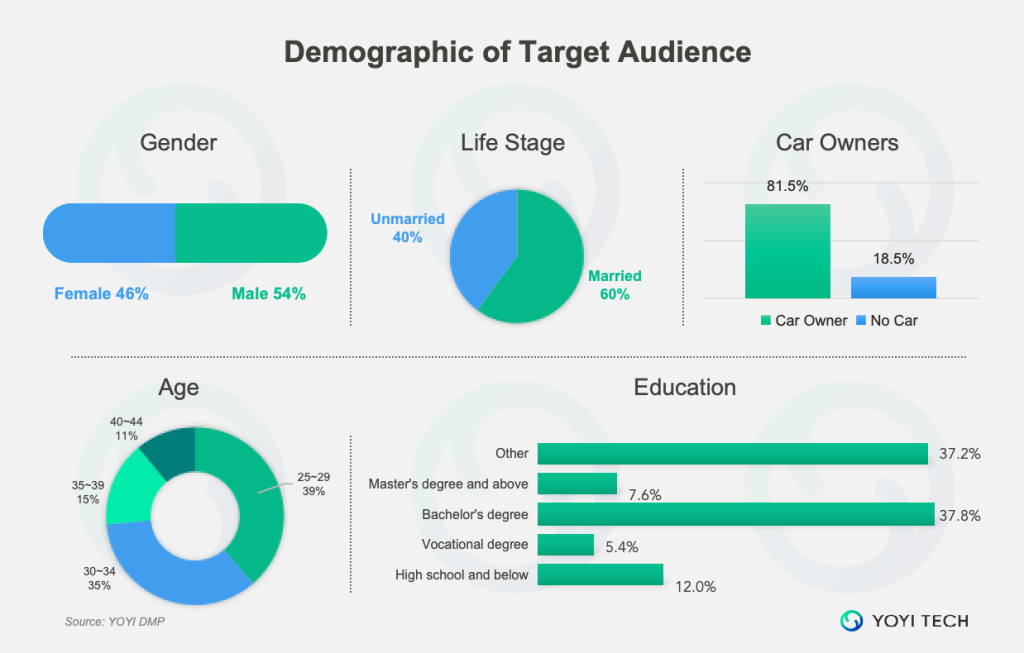
05 Strategic Recommendations
Regulatory Compliance: Avoid direct marketing for critical care; focus on educational content and KOL partnerships.
Precision Targeting: Utilize YOYI DMP’s cross-screen ID mapping to reach high-intent segments.
Service Differentiation: Design personalised aesthetic packages (e.g., minimally invasive procedures for men) and hybrid medical-tourism experiences.
The Chinese outbound medical tourism market demands a nuanced, data-driven approach. Stakeholders must align with regulatory constraints, prioritize hyper-personalized engagement, and leverage granular consumer insights to capture growth.
For deeper insights into the Chinese outbound medical service persona—including city-level distribution, app preferences, behaviors, and more—as well as strategies to target, engage, and convert this audience, feel free to reach out to us at marketing@yoyi.com.cn.
Our experts will craft a tailored marketing strategy based on DMP-driven insights to meet your specific needs.
Source of featured image: Photo by David Trinks on Unsplash
